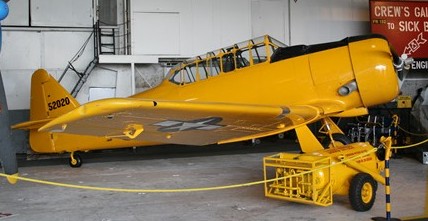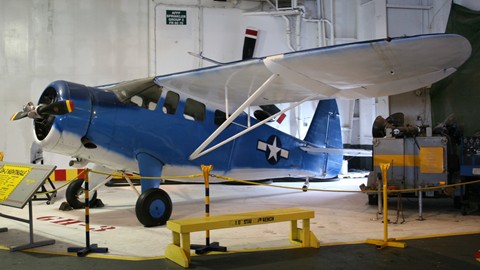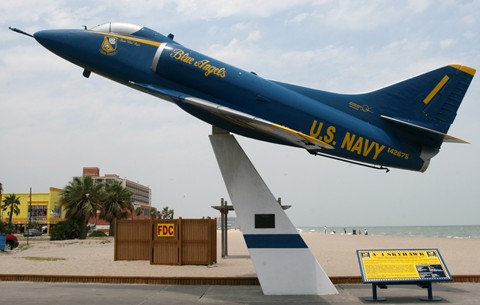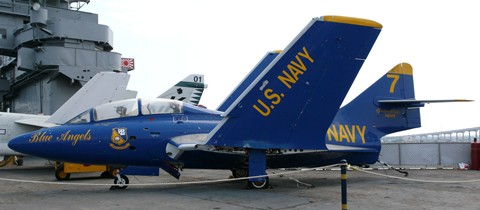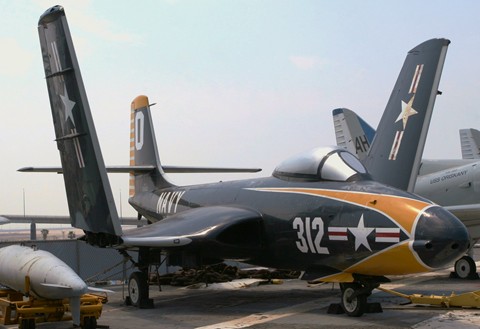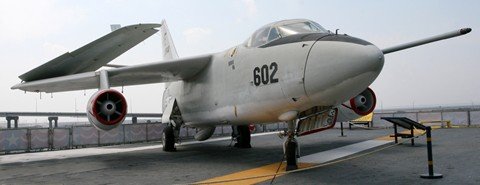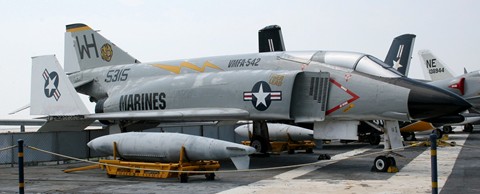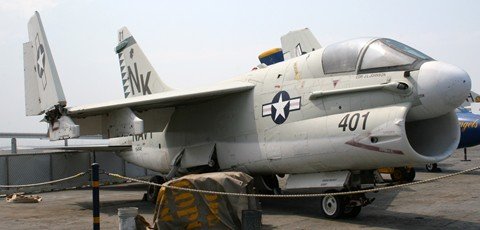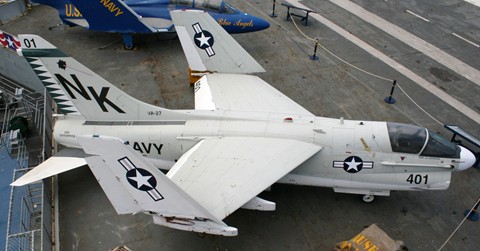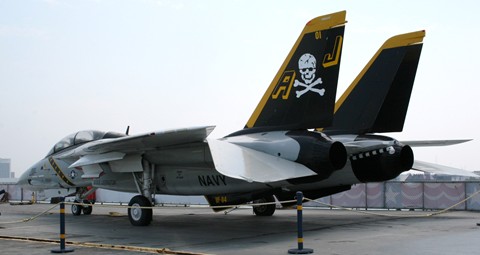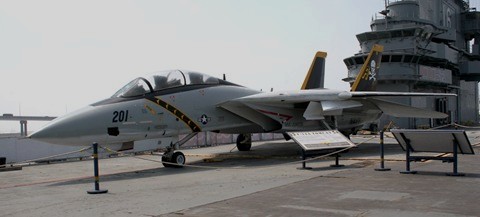|
USS Lexington Aircraft (CV-16)
The USS Lexington aircraft carrier museum is located in Corpus Christi, TX. We begin our tour of the USS Lexington aircraft on the hangar deck. First up is a North American SNJ-5 Texan (52020), which is the Navy version of the AT-6 Texan. Texans are known by different designations depending on the branch of service and country served. Of the 15,495 Texans built (all variants), there were 1,357 SNJ-5 Texans produced. Photo by Horace Sagnor.
The GH-3 Nightingale was the US Navy designation for the Howard Aircraft DGA-15, a very competent aircraft used for transport, cargo, and as an air ambulance. DGA stood for Damn Good Aircraft. Photo by Horace Sagnor.
At the beach level entrance to the USS Lexington museum is this A4D-2 Skyhawk (142675), which was redesignated A-4B, painted in US Navy Blue Angels markings. The Angels flew the Skyhawk (A-4F model) from 1975 to 1986 before transitioning to their current aircraft, the F/A-18 Hornet.
Here’s another Blue Angel example, the Grumman F9F-8 Cougar (142470). This one actually flew with the Angels as the number 7 plane during the 1968 season. Don't believe us? Check out the photo below.
Here's the exact same aircraft parked on the ramp at Reading Airport, PA, in June 1968. It's big sister is the support aircraft the Blue Angels flew at the time, the C-121J (131623) Constellation, or 'Connie' as it was affectionately known. Photo by Horace Sagnor.
The McDonnell F2H Banshee was a carrier-based jet fighter aircraft used by the United States Navy and Marine Corp from 1948 to 1959, and by the Royal Canadian Navy from 1955 until 1962. The Banshee had straight wings, a single seat, and two engines. Together with the F9F Panther, the Banshee was one of the US Navy’s primary single-seat fighters during the Korean War. This aircraft is the McDonnell F2H-2 variant (125052) of which 306 were built. The F2H-2 had more powerful engines than the F2H-1 and had detachable wing tip fuel tanks as can be seen here just to the left of the aircraft. It also had wing modifications to allow for the use of weapons pylons.
Here is a rare Sky Warrior KA-3B aerial tanker (138944). Eighty five A-3Bs were refitted to convert them into KA-3Bs. The aircraft above is marked in the colors of VAH-2 (now VAQ-132) off the USS Coral Sea, and based at NAS Whidbey Island, WA.
This is our favorite USS Lexington aircraft because it's our favorite jet of all time. This F4H-1F Phantom II (145315) was redesignated F-4A. It is marked in the colors of VMFA-542 which now resides at MCAS Cherry Point, NC, flying the AV-8B Harrier. Photo by Horace Sagnor.
Here are two photos of the Ling-Temco-Vought A-7 Corsair II. It was a carrier-based subsonic light attack aircraft design that was introduced to replace the A-4 Skyhawk in US Naval service and was based on the successful supersonic F-8 Crusader aircraft produced by Chance Vought. The A-7 was one of the first combat aircraft to feature a heads-up display (HUD), doppler-bounded inertial navigation system (INS), and a turbofan engine. It initially entered service with the United States Navy during the Vietnam conflict and was then adopted by the United States Air Force to replace their A-1 Skyraiders that were borrowed from the Navy. The A-7 was also placed with Air National Guard units. The Corsair II was exported to Greece (in the 1970s), Portugal, and Thailand (in the late 1980s). On display here is an A-7B (154548) marked in squadron VA-27 colors (now VFA-27), the Royal Maces, off the USS Enterprise. Both photos by Horace Sagnor.
Okay, you Tomcat fans. Yes, one of the USS Lexington aircraft is this F-14A (160694), painted up in the markings of VF-84, the Jolly Rogers. It is also painted as a USS Lexington aircraft. It has Hollywood connections as it was used in the making of the JAG television series. The F-14A is the original production two-seat all-weather interceptor fighter version for the US Navy. Modifications late in its service life added precision strike munitions to its armament. A total of 545 F-14A aircraft were delivered to the US Navy and 79 delivered to Iran. The final 102 F-14A's were delivered with improved TF30-P-414A engines. Additionally, an 80th F-14A was manufactured for Iran, but was delivered to the US Navy. Both photos by Horace Sagnor.
|
